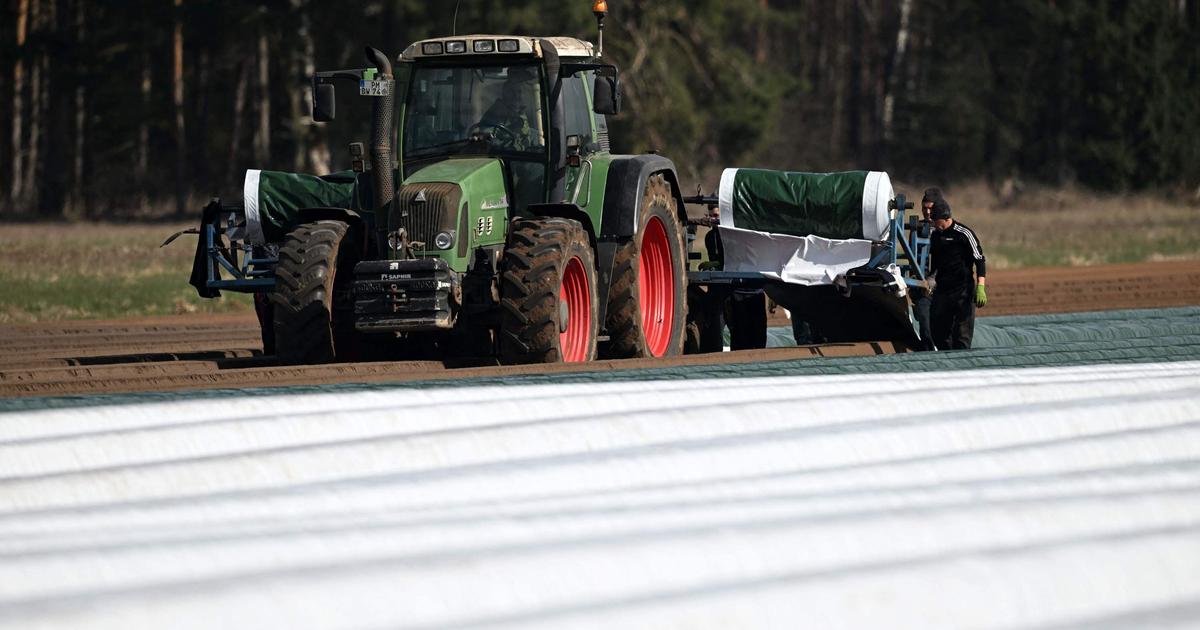In Europe, the number of honeybees has dropped over many years. Since then, experts warn of a large bee mortality and economic losses due to the elimination of pollinators. Partly responsible for the disappearance of bees they make three substances from the group of so-called neonicotinoids.
The agents protect plants from pests, but can also affect or kill bees. Neonicotinoids are the most widely used insecticides worldwide.
On Friday, the 28 EU Member States will vote on a ban on substances in the field. The meeting had originally been scheduled for the end of 2017, but was postponed because Member States wanted to await a new evaluation by the European Food Safety Authority (Efsa).
Explaining animation: How is bee mortality?
explain it
Which fabrics is it?
Neonicotinoids are insecticides. They should protect plants from harmful insects. There are currently five such substances authorized in the European Union (EU). The EU vote concerns the three active substances clothianidin, imidacloprid and thiamethoxam. As early as 2013, the EU had imposed stricter rules for them, because Efsa had classified the substances as dangerous for bees.
How are neonicotinoids used so far?
Farmers use the funds primarily as a mordant to protect seeds from insects. When growing, the substances are then distributed in the plant - also in pollen and nectar. Because neonicotinoids are only slowly degraded in the plants, they protect them for a long time from biting and sucking insects such as scale insects or the cherry fruit fly. The fabrics can also be sprayed on leaves or placed on the irrigation system in the plants.
Since the new regulation in 2013, farmers in the EU are no longer allowed to apply the three controversial insecticides outdoors to bees preferred plants, such as corn, oilseed rape, sunflowers and the cultivation of cherries, apples or cucumbers. In other plants, however, the neonicotinoids are still allowed. For example, they may be used in wheat or barley if the grain is sown between January and June. They may also be used in the sugar beet because they are harvested before flowering.
How do the controversial insecticides work?
Neonicotinoids damage the central nervous system of insects by permanently stimulating a receptor of nerve cells. Eating the insects from the plant or sucking on them leads to cramps and death of the animals. They can not spread then. In wild and honey bees, neonicotinoids may, according to studies, limit the ability to orient, or paralyze or kill them in larger quantities. For vertebrates like birds, the substances are not as toxic according to Efsa as they are for insects.
MORE ON THE SUBJECT
What does the EU want to change now?
The European Commission has suggested that the three controversial neonicotinoids should now only be allowed in greenhouses. In the field, the use should be completely prohibited. To enforce the proposal, at least 16 EU countries representing at least 65 percent of the EU population must vote in favor on Friday.
Which position does Germany represent?
Federal Minister of Agriculture Julia Klöckner (CDU) has reiterated that she will agree to the planned outdoor ban in Brussels. "What harm the bee comes from the market," Klöckner assured a few days ago in the Bundestag. A free-range ban is in the interest of nature, but also in the interest of agriculture, because they rely on the pollination performance of bees.
What findings has the new Efsa rating brought?
In essence, Efsa confirmed its 2013 results: "The majority of applications of neonicotinoid-containing pesticides pose a risk to wild and honey bees," she wrote in late February 2018. An overview of the agency's topic reads: "Currently Possible application in the field can no longer be considered safe with regard to risks for bees. "
How does Efsa get that?
The Authority has collected additional data since 2013 and evaluated the expected levels of controversial neonicotinoids in bees when used properly. The crowd compared them to the quantities of neonicotinoids that have been shown to affect bees. If the expected value was above the safe level, the agency assessed the risk of damage to the bees as high.
How dangerous are the other approved plant protection products?
The neonicotinoid acetamipride Efsa certifies a low risk for bees. EU approval was just extended until 2033.
The neonicotinoid thiacloprid also rates Efsa as significantly less harmful to bees than the other three active substances. However, the substance is on the substitution list of the European Union because it has hormone-like properties. This means he may only be allowed to continue, as long as there is no better alternative.
What alternatives are there to the three controversial substances?
Following the introduction of the stricter neonicotinoid rules in 2013, researchers randomly examined how farmers responded. The majority therefore went back to still allowed neonicotinoids or so-called pyrethroids - another insecticide group - back. The treatment was perceived by many subjects as more time consuming, expensive and less effective.
Without insect repellent, agriculture will not get along if they want to preserve their yields. By comparison, in organic farming, according to survey studies, crop yields are on average about 25 percent lower than in conventional farming, although organic farmers are also fighting pests. You have less resources to choose from. Without insecticides, the loss would be significantly higher depending on crop and pest infestation.








